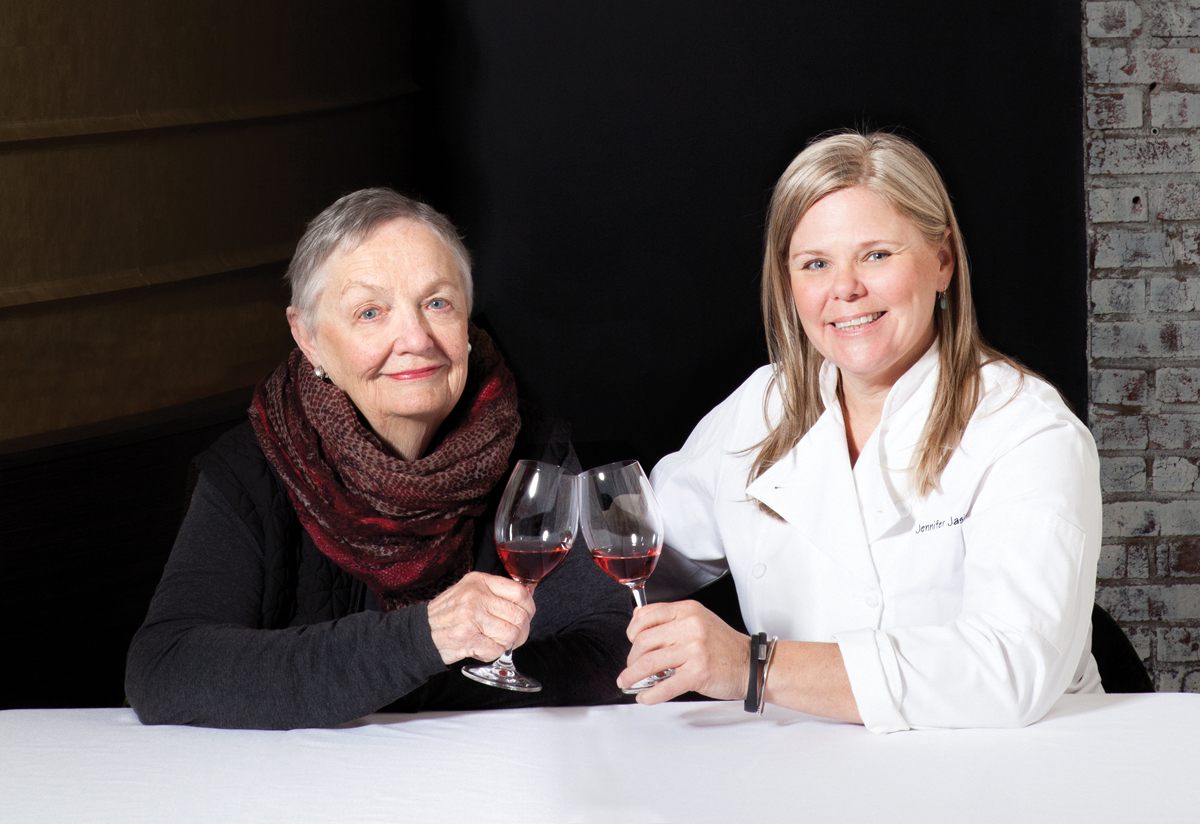The Local newsletter is your free, daily guide to life in Colorado. For locals, by locals.
 A field of dreams only works out if, once you build it, they actually come. So while Dana Crawford deserves hefty praise for Larimer Square’s enduring influence in Denver, Jennifer Jasinski has become the development’s Shoeless Joe—the attraction people come for. The city’s first James Beard Award–winning chef, Jasinski serves thousands of diners each year at her three Larimer Square restaurants. That’s why we asked her to join Crawford at Jasinski’s newly renovated Rioja to discuss why it’s hip to be in the square, which turns 50 this month, and why it’s going to stay that way.
A field of dreams only works out if, once you build it, they actually come. So while Dana Crawford deserves hefty praise for Larimer Square’s enduring influence in Denver, Jennifer Jasinski has become the development’s Shoeless Joe—the attraction people come for. The city’s first James Beard Award–winning chef, Jasinski serves thousands of diners each year at her three Larimer Square restaurants. That’s why we asked her to join Crawford at Jasinski’s newly renovated Rioja to discuss why it’s hip to be in the square, which turns 50 this month, and why it’s going to stay that way.
(Read more about Larimer Square’s 50 anniversary)
5280: Jen, you worked at Panzano, on 17th Street, when you first arrived in Denver in 2000, but you opened your first restaurant, Rioja, in Larimer Square in 2004. Why?
Jasinski: I would walk or ride my bike by Larimer Square every day, and I would look at that spot on the corner where Ocean Prime is now. I always thought, I want a restaurant right there. I loved how the square looked. It was so inviting to relax in compared with the financial district.
5280: Did the historical buildings factor in?
Jasinski: Oh, yes. That’s part of what makes it feel more relaxing, how charming the buildings are. The lights, banners, flowers—it makes up that ambience.
Crawford: It’s almost bringing tears to my eyes to hear her say that because those things were goals. I had to promote the hell out of it. One guy said, “Oh, I get it. It’s like Disneyland.” And I said, “No. It’s not like Disneyland.” Authenticity was extremely important to us. It’s not a theme park. It’s not about tourists. It’s about the people of Denver.
5280: Dana, what was the hardest part of making Larimer Square successful?
Crawford: Oh, just money. You know, collecting the rent. There was an art gallery that did $10 in business one month. So I obviously couldn’t collect the rent from her. Then getting the money to develop the rest of it. Everybody thought I was crazy. In a way, I was.
5280: Was it more difficult because you are a woman?
Crawford: They always ask me this question. I always tell them to tell their editor [who, for the record, is a woman in this case]: “No, it was an advantage.”
5280: How so?
Crawford: Oh, we’d have to drink to talk about it.
5280: Restaurants often become victims of their own success when they get too popular and rents skyrocket.
5280: Any fear of that happening in Larimer Square?
Crawford: What you’re talking about is very, very interesting. I am working in RiNo now. It’s an arts district, and everybody wants to keep the artists, but affordability is a huge issue. I also worry about the Art District on Santa Fe. You know, if I ever made a lot of money, I’d start a foundation to help keep the artists.
Jasinski: [We have to] keep the area sort of funky and local.
Crawford: Keep it gritty.
Jasinski: Because when it becomes too high-end, people aren’t coming for the same reasons anymore. Like Dana said, keeping it gritty keeps the right mix of people coming in.
5280: Jen, you have three restaurants in Larimer Square and just renovated Rioja. Why are you so optimistic about the square’s future?
Jasinski: As a tenant here, the right people are looking out for the square’s needs, which are also my needs. I know they want to do something with the alleys, make those living areas, and do some other things off in the future. They are looking to the future to build, which I think is important, rather than just stagnating. I’m absolutely committed, though I probably wouldn’t do another restaurant here because that’d be too many in one block. Maybe RiNo. Maybe we should talk, Dana.
Crawford: Don’t worry, honey. We’ll be around.
5280.com Exclusive: Read more from our interview below.
5280: Larimer Square was the first historic district in Denver, but now we have 53 of them. Keeping those old buildings, has that been important to the dining scene?
Jasinski: I don’t know about the dining scene, but, again, people can’t always put a finger on what they like about a place. They just know they like it. The general ambience of a building and its feel—it draws people in. … I am from Santa Barbara, and Santa Barbara had a building moratorium for years. One thing I love about Santa Barbara is it still looks like it did in the 1970s. … It feels comfortable but also progressive, and I think that’s how Larimer Square feels. It’s comfortable, but also young and progressive and interesting and fun. … That’s what increases the foot traffic, and foot traffic alone is a big dining scene motivator. Any student in culinary school, you’re taught location, location, location—that’s this location. And so I have three restaurants here. Another [Stoic & Genuine, a seafood restaurant] is in beautiful, historic Union Station, which I think is another beyond wonderful location.
5280: Dana was talking about how she’s an oyster fiend before you got here.
Crawford: I went [to Stoic & Genuine] yesterday. Twice.
Jasinski: Well, it’s good stuff.
5280: Dana, are you surprised that Larimer Square’s success has spread like wildfire throughout Denver?
Crawford: From my perspective, my dear, it hasn’t been wildfire. It’s been a great, big struggle.
5280: Tell me about the struggle.
Crawford: Don’t you think 50 years is a fairly long time? Half a century?
Jasinski: Maybe that’s why it lasts, though.
Crawford: You’re an extremely comforting person.
Jasinski: No, seriously.
Crawford: Well, we’re in the top 10 of everything in Denver now. That’s thanks to marijuana and the oil business. [But] Denver is a boom and bust town. We’re going to have a big old bust coming up here. … In the 1980s, we built so many office buildings, thinking the oil business was here forever. [I was sitting in an auditorium] next to an accountant that I hardly knew. There were people your age sitting up on stage talking about how [the boom] was going to go on forever. [The accountant] and I started holding hands because we both knew there would be a “character-building” recession again. I’ve been through a bunch of busts. You just have to hang on.
BONUS: Historic renovations that helped reshape other cities.
Ghirardelli Square, San Francisco, California
Established: 1964
This former chocolate factory (now a retail and dining center) claims to be the first adaptive reuse project in the country and welcomes up to 20,000 visitors per day.
Pike Place Market, Seattle, Washington
Established: 1971
Rain or, well, more rain, patrons flock to Pike Place, which was saved from demolition when voters turned it into a historic district and now boasts more than 200 independent businesses.
American Tobacco Campus, Durham, North Carolina
Established: 2004
The renovation of a former Lucky Strike factory into office, entertainment, and residential space injected life into a city struggling with tobacco withdrawal.









